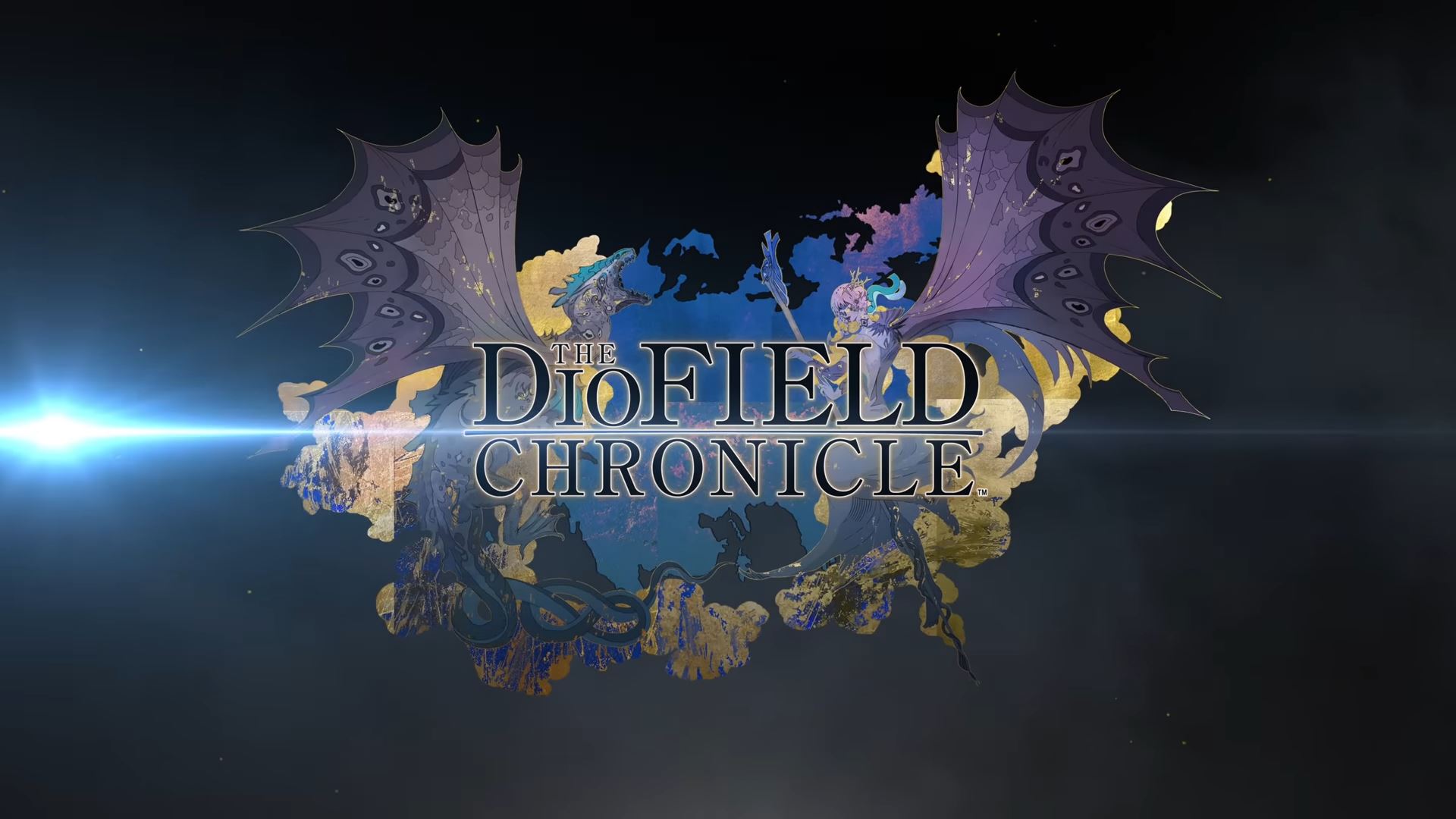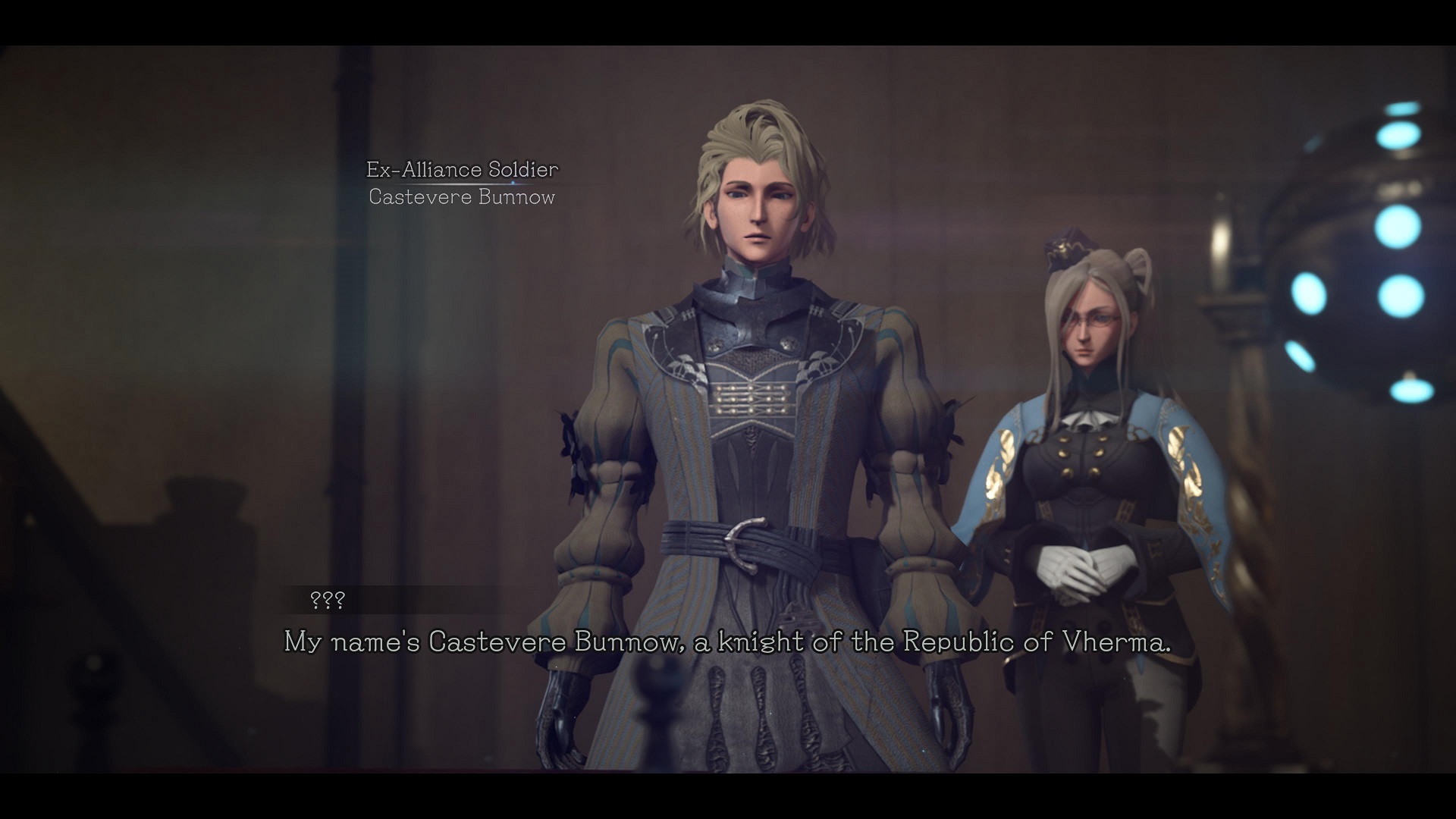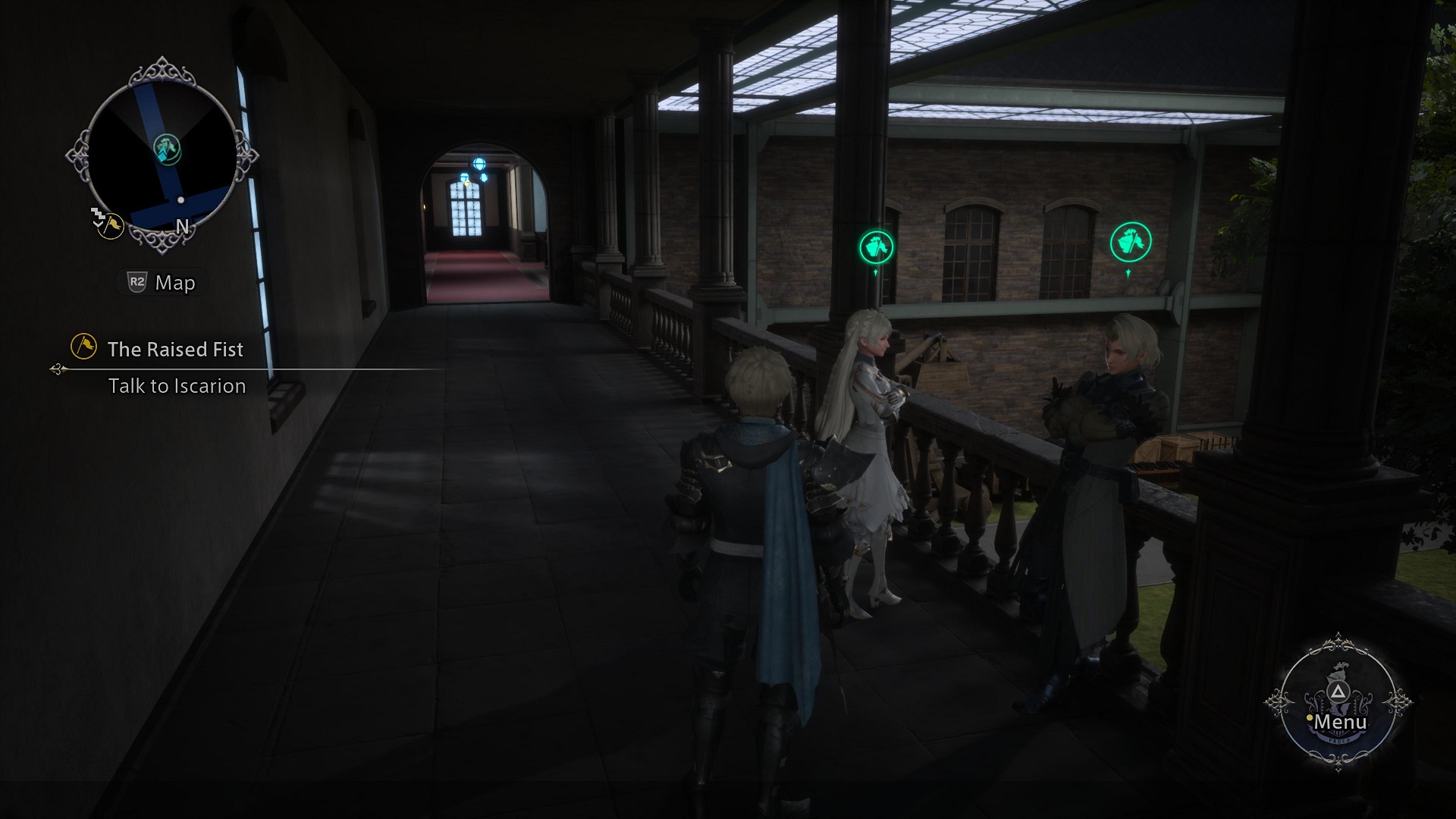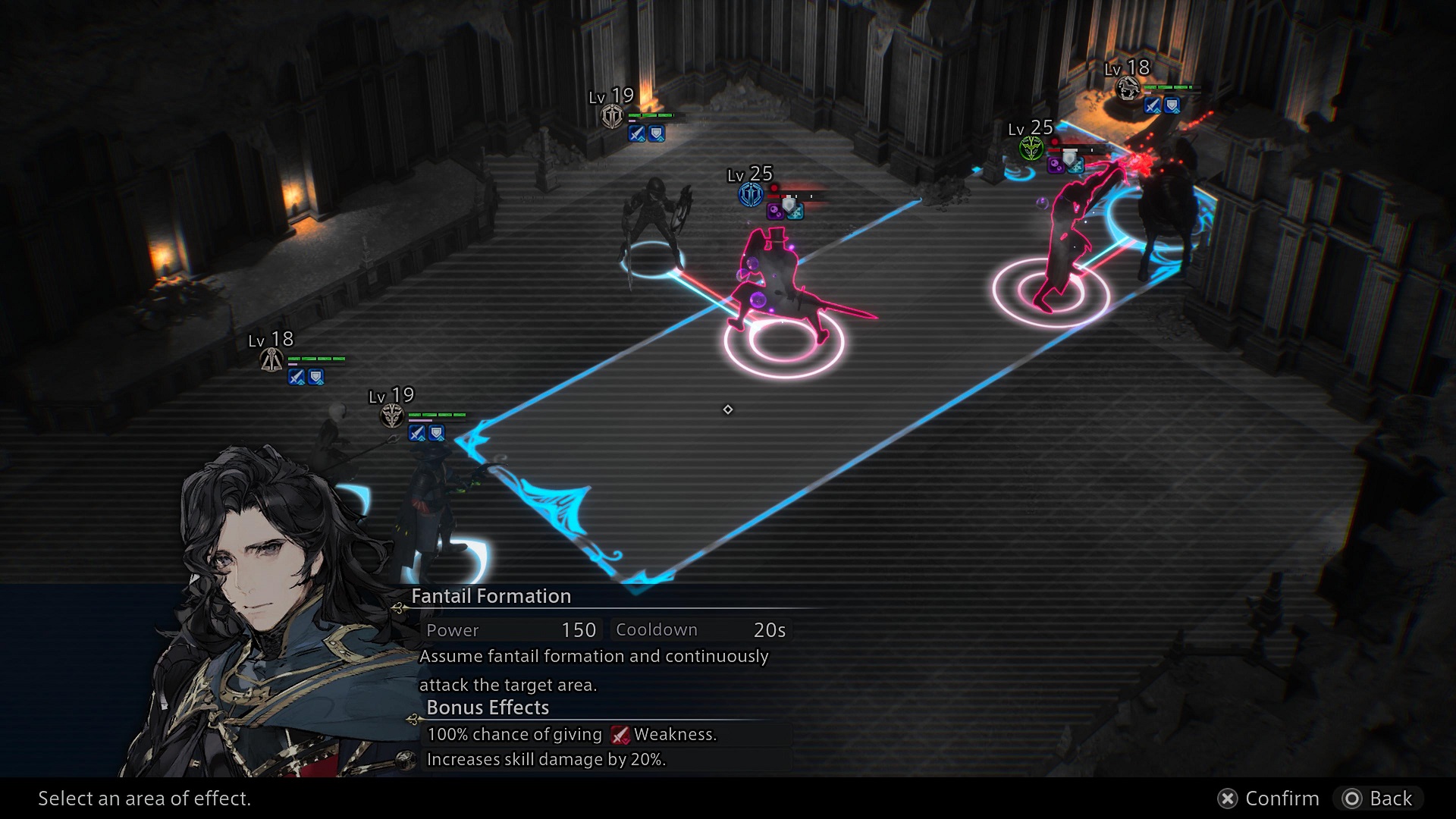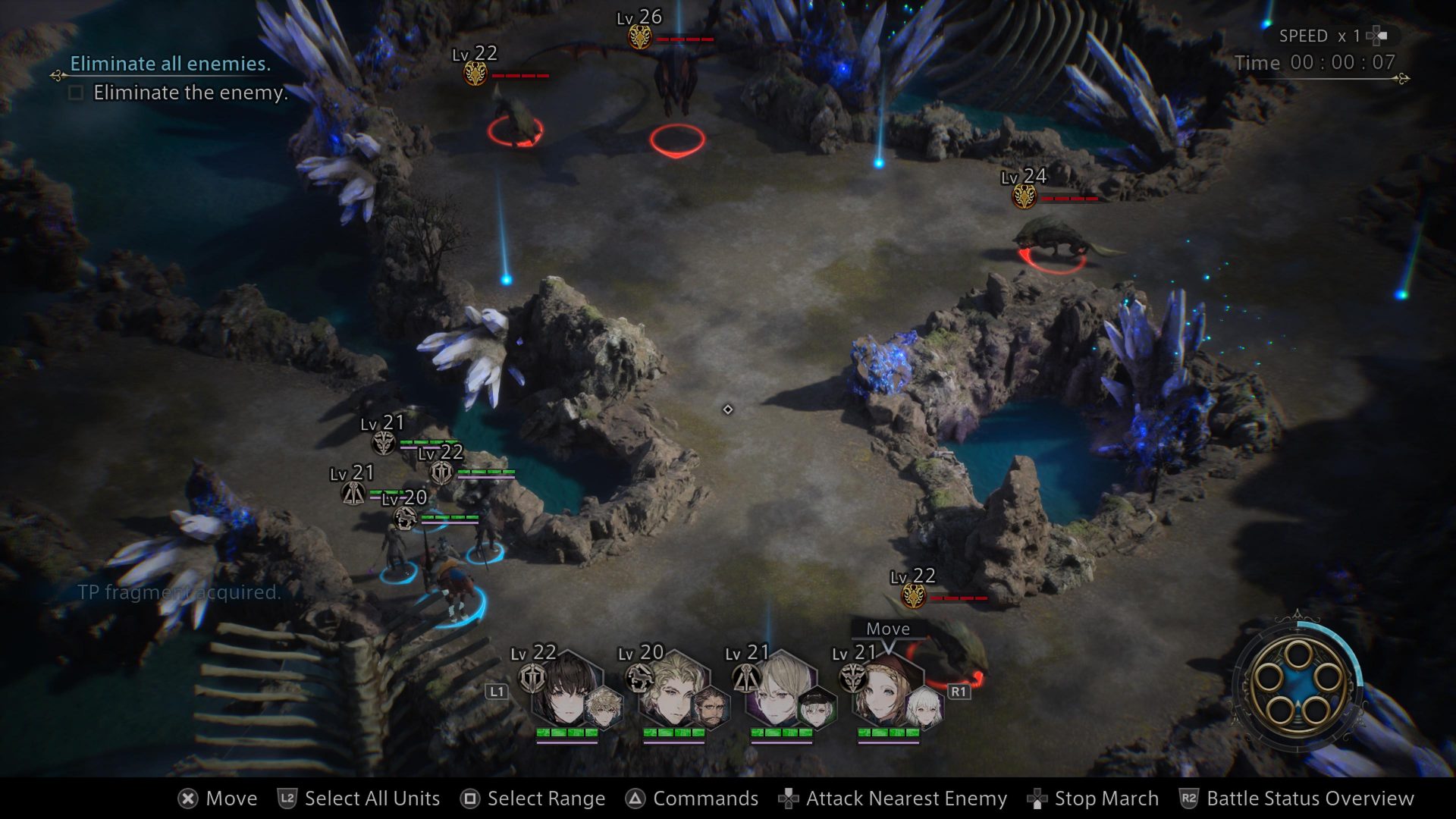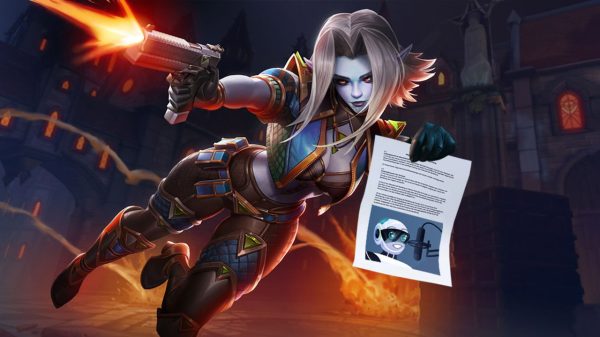Oh, Square Enix, what a rollercoaster year. They pumped up fans’ enthusiasm with promising new IPs, from the terrific Triangle Strategy to the messy misfire that is the soon to be buried Babylon’s Fall, and now In the middle of this spectrum, we find an aggressively okay middle with The DioField Chronicles.
The island of DioField is home to rare magical crystals called jade. A nearby warring continent seeks to tip their enduring stalemate, with the empire sending forces to DioField in order to gain said crystals and weaponise them for their own military advantage.
None of this will mean much to you, the player, as you are tasked with controlling a mercenary band called the Blue Foxes, who have little investment in the conflict and would rather play the role of roaming cops. In between occasional bouts against the encroaching empire, you will lead a band of four units into small-scale strategic skirmishes against monsters, ambitious aristocrats, and citizens seeking democracy. Emphasis on that last point. In service to the highest bidder, you’ll spend just as much time stamping out democratic revolutions than actually servicing the grand conflict that brews upon your shores.
That’s one fake-ass name, bro
I am hesitant to name any of the Blue Foxes here, as they all have terribly butchered attempts at anglicised, middle-English names that were clearly thought up by some over-imaginative Japanese folks. Aside from encountering a Lorraine and a Catherine in the latter half of the game, you will be bored by the lengthy ramblings of characters such as Waltaquin, Hezeliah, Zoruaq, and their accompanying entourage of forgettable and stupidly-named figures.
The thrust of this game is split into two halves: socialising and organising the squad in the team hall, and engaging in battle scenarios from the war table. The former here is by far the deadweight of the game, wanting to resemble the school intermissions of Fire Emblem Three Houses, but lacking in any purposeful interactions. Talking to characters initiates a text dump that will randomly either be fully voiced or just overlaid with obnoxious sound bytes that often don’t match the context of what is being said. Remember that infamous Tidus laugh from Final Fantasy X? I swear most characters do this during these conversations when the text is explaining a village that has been devoured by roaming demi-humans. Ultimately, these conversations are poorly written and often end in an abrupt manner with a question, as though the dialogue is incomplete. Then there will be a notice that a side mission has opened up or the player has been given a generous sum of guld (sic) for the mere interaction.
The halls are otherwise empty except for these occasional, droll conversation opportunities
Before heading to the war table, players can also upgrade the hall’s facilities to unlock better gear and skills. This system seems initially desirable, providing players with some light RPG elements with which to flesh out their mercenaries. Alas, skills and abilities are tied to weapons, and the weapon progression for each class is completely linear with an occasional alternative option that will be a waste of resources. The issue with tying skills to these linear weapon options is that the characters within the nine sub-classes end up having no discernible differences. Choose four that you like and stick with them. When investing in each sub-class skill, the investment will be wasted if the next weapon on a given class’s progression tree doesn’t have those skills applied to it (as is often the case). Damningly, the progression of this game tries to deceive the player with a pretty array of menus, but is ultimately on rails and disadvantages players that don’t cotton on to this fact early and instead invest in skills and abilities they cannot actually use.
Now to the war table, the one area where this game threatens to shine. The table arrays a bunch of side missions and a single main mission which will advance the convoluted yet ambiguous plot. Side missions often take place in locations that players have already been in, and typically consist of the same three mission types that main missions feature: escort a character, defend a barrier, and eliminate all enemies. That side missions feature the same maps and enemies would normally be forgivable if there were more than four enemy types and map tile sets on rotation. If you have played the demo, you’ve seen the overwhelming majority of the content that this game recycles over its 20–30-hour runtime. Yet, these scenarios also feature the few strengths this game has. Namely, the innovative squad-based combat.
I have the enemy perfectly positioned to fire volleys at their unguarded backsides
Players will enter any of the three mission types with a squad of four mercenaries from a roster of about a dozen. There are four main classes that sufficiently round out the tactical considerations that the squad needs: a tanky soldier, mobile cavalier, ranged archer, and supporting magic wielder. The four chosen mercs can each have a support merc assigned, to add additional skills to their repertoire. Scenarios proceed in real-time and take approximately six to eight minutes, which is a tidy length for these repetitive missions. When players assign a move order or ability, time pauses and players can tactically plot out their strategy, and then movement and combat again proceed in real time. It is a fantastic system that encourages micromanaging your units to flank, surround, and reposition enemies for critical backstabs and effective use of area-of-effect attacks. Rounding up a pack of wolves by using a cavalier’s mounted charge, only to then follow up with a tightly focused rain of arrows on their grouped-up position is satisfying and these moments carry the game and make the player feel smart with the tools they have.
Unfortunately, micromanaging often goes beyond plotting orders, and extends to having to babysit the AI. All AI, whether friend or foe, will randomly disengage in battles or suffer from pathfinding issues. Ranged ally AI often needs to be handheld at any moment. After using a non-offensive support ability, they will forget that an enemy is within an inch of them and will need to be refocused on the target. This doesn’t happen as often with melee units. Also, enemy AI can often be exploited. If there is a direct obstacle or gap placed precisely between your units and the enemy squad, their pathfinding won’t know which path to you is shorter in skirting the obstacle. Rather than picking one, the entire squad just freezes its advance and can be picked off from afar.
The chokepoints here open up exciting ambush opportunities
The DioField Chronicles is a game I wanted to love. I am excited by the prospects of a sequel, especially as the ending and all that leads up to it is merely franchise building. The core strategic, paused-time mapping of the combat scenarios is empowering and left me feeling like I could work myself out of tight situations by using the right tools with considered positioning. The addition of being able to summon giant creatures with support and offensive abilities is also a great tide-turner that never feels cheap.
Final Thoughts
Another new franchise from Square Enix brings with it hints of potential alongside an innovative combat system that will serve future titles well. Yet the repetition across all of The DioField Chronicle’s facets, with an aimless story featuring reprehensible yet forgettable characters, anchors this game deep in ‘average’ territory. I didn’t dislike my 30-hour completionist run of DioField, but I’m hard-pressed to recommend it before it is redeemed by a more ambitious sequel.
Reviewed on PS5 // Review code supplied by publisher
Click here for more information on WellPlayed’s review policy and ethics

- Square Enix and Lancarse Ltd.
- Square Enix
- PS5 / PS4 / Xbox Series X|S / Xbox One / Switch / PC
- September 22, 2022








